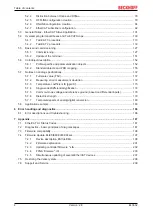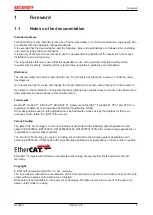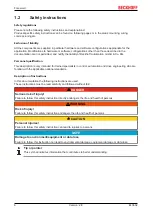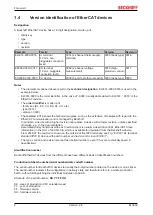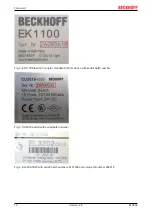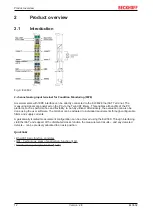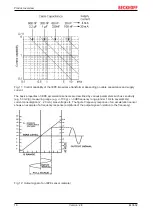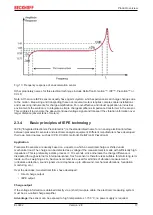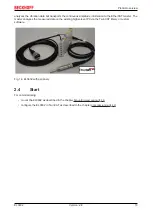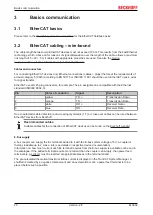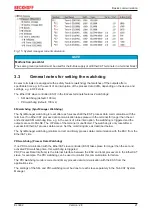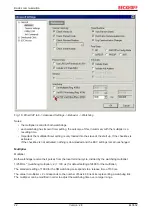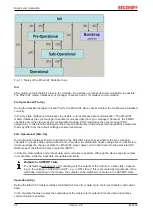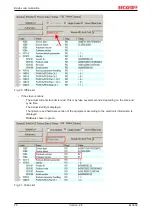
Product overview
EL3632
14
Version: 2.8
2.3
Technology
2.3.1
Vibration analysis
Vibration analysis refers to deriving of information from existing (mechanical) vibrations e.g. in machines or
certain production processes. It can take place during Condition Monitoring, e.g. for drives, punching and
pressing tools, in production processes such as balancing of rotating parts, or during other movements such
as torsion of towers/wind turbines.
The table below illustrates typical acceleration values for natural and technical processes.
Typical acceleration values
Machine or event
Typical g-value
Commercial aircraft (take-off)
≈ 0,5
Formula 1 car (start)
≈ 1 – 1,5
Commercial aircraft (turning, max.)
≈ 2,5
Pendulum at 90° amplitude
≈ 2
Space Shuttle during journey into orbit
max. 3 (exact)
Space Shuttle during re-entry into the Earth's atmosphere
max. 1.6
Typical roller coaster ride (max.)
4 (6)
Formula 1 car (cornering, max.)
≈ 4 – 5
Circular looping (base)
≥ 6
Combat aircraft/aerobatics (max.)
≈ 10 (13,8)
Ejector seat
15 – 20
Car back-rest breaks at
≈ 20
Head-on car collision
up to ≈ 50
Car passenger compartment during crash
max. 120
Survived by a human
≈ 180
Hard fist stroke
up to ≈ 100
Raindrop hitting the eye
up to ≈ 150
Ball pen hitting hard floor from 1 m height
order of magnitude 1000
Hard disk falling on hard floor from 1 m height (without deformation of the floor) 10,000 or more
Laboratory centrifuge
≈ 10.000
Ultra centrifuge
≈ 100.000
Rifle bullet during firing
≈ 100.000
Spike during ejection from a nettle cell
5.410.000
Nuclear bomb explosion (bomb case)
up to ≈ 10
11
Neutron star surface
≈ 2·10
11
2.3.2
Application of condition monitoring
Condition monitoring can be used to glean information on the state of rotating/moving parts through
measurement of vibrations at machines/drives/gears and subsequent analysis with suitable mathematical
tools (e.g. TwinCAT library, FFT, custom user programs).
The existing vibration is recorded continuously or at longer, regular time intervals and finally compared with a
setpoint value/initial value (Fig.
Sample of ball bearing damage and subsequent analysis
).
In this way any damage can be detected at an early stage. Instead of changing components preventively on
a regular basis or waiting for sudden damage and subsequent expensive downtime and possible
consequential damage, repairs and downtimes become plannable. Needless failures, consequential damage
or prematurely and costly replacement of intact parts can be avoided.




